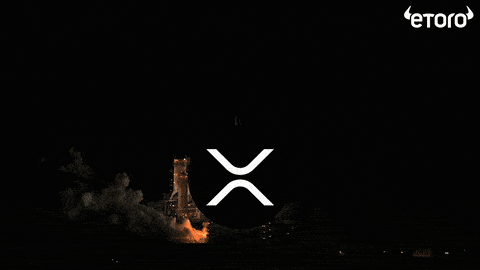In a big leap forward for institutional blockchain adoption, Guggenheim Treasury Services has launched its Digital Commercial Paper (DCP) on the XRP Ledger (XRPL), marking the first native issuance of this kind of instrument on this established blockchain network. This 1000 iQ move is a very real step toward modernizing traditional financial instruments through distributed ledger technology, with Guggenheim leveraging the XRPL's power to enhance the efficiency of short-term corporate debt markets.
So, what does all of that actually mean? And more importantly, what are investors meant to do with this information?
The newly tokenized Digital Commercial Paper is a short-term debt instrument, typically issued by corporations to meet immediate financing needs, similar to traditional commercial paper but with blockchain-enabled improvements. What makes Guggenheim's offering particularly interesting is the underlying collateral - the DCP is backed by U.S. Treasury securities and carries Moody's Prime-1 rating, the highest possible short-term credit rating indicating minimal default risk. This high-quality backing provides institutional investors with the security they want, while accessing innovative blockchain benefits.
Now for those who mightn’t be familiar with the XRP Ledger, it’s another decentralized blockchain that has operated continuously since 2012. It offers several advantages for financial instruments like the DCP. Unlike traditional commercial paper markets that operate within business hours and involve multi-day settlement periods, the XRPL enables real-time settlement 24/7 while dramatically reducing transaction costs. The ledger has processed over 3.3 billion transactions without any security breaches or downtime, maintained by a global network of more than 200 independent validators that verify transactions through a unique consensus mechanism rather than energy-intensive mining.
Guggenheim's DCP issuance is piggy backing on the success of its September 2024 rollout, which already facilitated over $280 million in transaction volume. The instrument is being administered through Zeconomy's institutional-grade platform and issued via Guggenheim's Great Bridge Capital Company special purpose vehicle. At the moment, access is restricted to Qualified Institutional Buyers and Qualified Purchasers under U.S. securities regulations, showing the product's positioning toward sophisticated financial institutions rather than retail investors. AKA, they’re thinking of the big guys, not investors like you and me.

Gif by PudgyMemez on Giphy
Marcus Infanger, Senior Vice President at RippleX, emphasized the significance of this development, saying that it represents blockchain tokenization moving beyond experimental phases into full-scale production:
"The XRP Ledger was specifically designed to support regulated financial assets that require the efficiency, scalability and compliance features global markets demand."
These kind of comments clearly show that public blockchains are increasingly meeting the stringent requirements of institutional finance rather than operating solely in the crypto-native sphere.
Zeconomy CEO Giacinto Cosenza framed the DCP deployment as even more proof that public blockchains can now support serious financial applications:
"This demonstrates how regulated, asset-backed instruments can thrive on public blockchain infrastructure at scale."
This collaboration has arrived when institutional interest in tokenizing real-world assets is snowballing rapidly. Tokenization, is a process that converts rights to physical or financial assets into blockchain-based digital tokens. Tokenization enables fractional ownership, enhanced liquidity, and automated compliance through smart contracts while maintaining transparent records of ownership and transaction history. A recent joint study by Boston Consulting Group and Ripple Labs projected the tokenized RWA market could reach between $12 trillion and $23.4 trillion by 2033, with financial instruments like commercial paper representing a significant portion of this growth.
The Guggenheim DCP initiative shows how blockchain can optimize short-term debt markets. Corporate treasurers gain access to a global pool of liquidity without traditional time zone restrictions, while investors benefit from instant settlement and reduced counterparty risk. The program also demonstrates how major financial institutions are progressively adopting decentralized infrastructure like XRPL while maintaining compliance with existing regulatory frameworks.
For investors like yourself, announcements like this are potentially really, really big clues as to where you should invest your money. As we have mentioned before, the projects with real-world use cases are the projects that have longevity. As cryptocurrencies and their technology continue to integrate into our daily lives, the blockchains that are running the show; enjoying increased adoption - they’re going to see healthy price action. Whether that’s the XRPL, SOL, ETH, it doesn’t really matter, follow the adoption!


